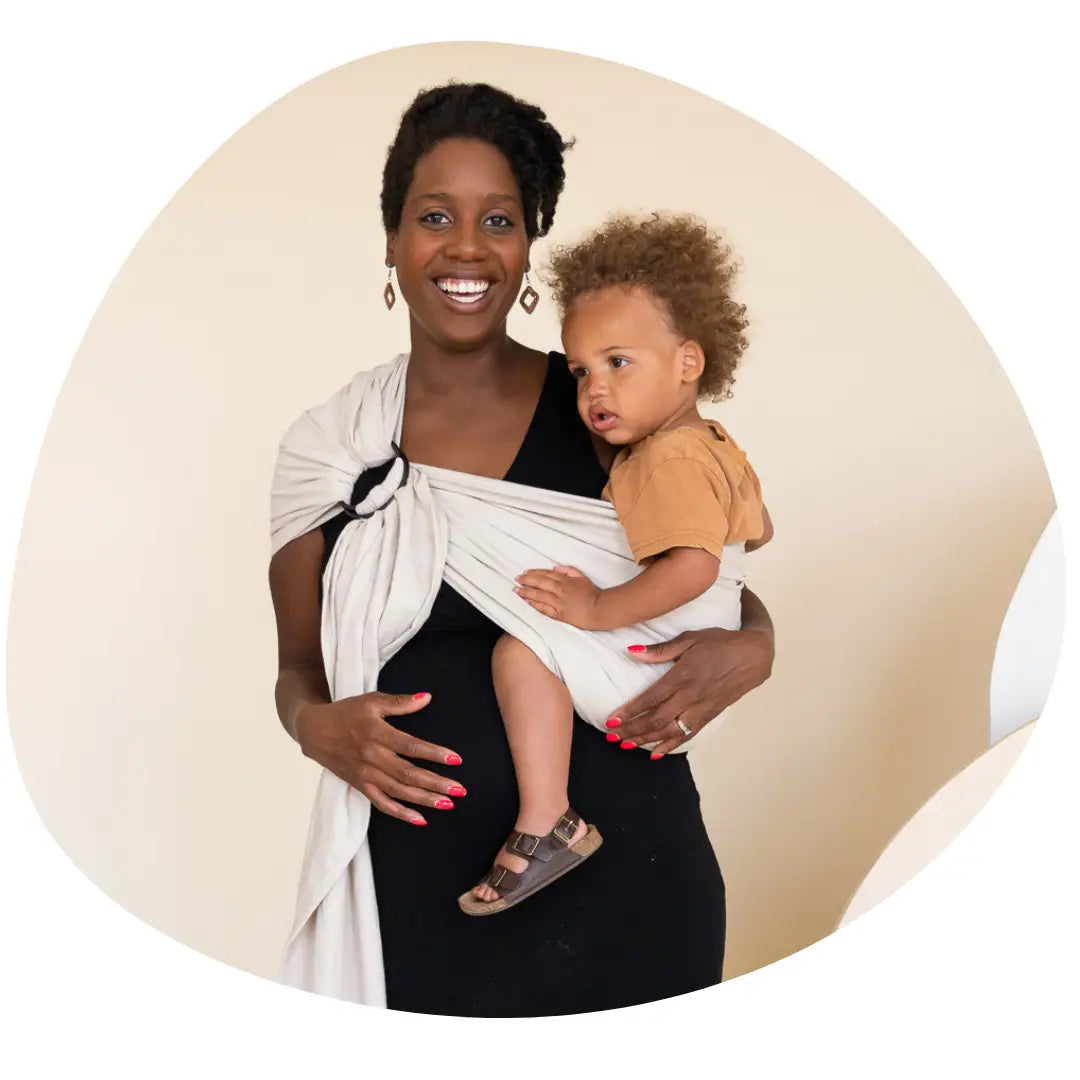Are Baby Carriers Considered Baby Containers?
Anytime I mention babywearing as a means to avoid excessive container device usage I immediately get asked the same question: Doesn't a baby carrier contain a baby? Why isn't a baby carrier considered a container toy too? Technically speaking, sure it does contain a baby! But the way in which it is done is quite different. To answer this let's explore a baby's experience in a container toy and compare that to their experience in a baby carrier.

Table of Contents
Understanding Container Toys
Unlike baby carriers, container toys are designed to keep babies in a fixed position, which can sometimes restrict their movement. Excessive use of these devices can lead to developmental concerns such as movement difficulties, physical issues, and developmental delays.
Movement Difficulties
Overuse of container toys can delay milestones like rolling, tummy time, sitting, crawling, and walking.
Physical Issues
Prolonged use may lead to problems such as “head flattening, facial asymmetry, torticollis, toe walking and overall decreased body strength.”
Developmental Delays
These toys can contribute to delays in vision, cognitive skills, and speech.
Baby Carriers: Different from Container Toys?

While baby carriers do “contain” your baby, their impact is quite different from that of traditional container toys.
1. Proximity and Connection
In a baby carrier, your infant is held close to their caregiver, which supports their nervous system and improves heart rate, breathing, and circulation. The caregiver is right there to note any changes in an infant's needs from early signs of hunger or discomfort. The infant is able to communicate with more subtle cueing like rooting, squirming, and vocalizations. This leads to improved caregiver and infant connection, improved communication, less crying, and further feelings of contentedness and safety. It also positively affects nursing and milk supply.
2. Variety of Movements
Baby carriers expose your baby to a large variety of movements and position changes. As you move around—whether taking care of other children, running errands, doing house chores, strolling the neighborhood, exercising, or hiking—your baby experiences different motions. The exposure to a variety of movements while being worn in a baby carrier helps a baby's sensory and motor development. This directly contrasts with the repetitive movements in many container toys.

3. Developmentally Appropriate Positioning
A well-designed baby carrier supports your baby’s spine and hips in a way that promotes proper musculoskeletal development. This is in contrast to many container toys, which can place excess stress on these areas and restrict natural movement.
4. Enhanced Interaction
Being in a baby carrier means your baby is exposed to a lot of variable movement and improved communication as they interact with their environment and you. This interaction supports cognitive and language development, something that is less pronounced when a baby is alone in a container toy.

Recommendations for Minimizing Container Toy Use
To support your baby’s development while managing the practical demands of parenthood, consider these recommendations:
1. Limit Your Registries
Don’t register for more than a bouncer (not a jumper). While having a place for your baby other than the floor is useful, excessive devices can lead to overuse. Instead, register for one or two baby carriers that will work from birth like a ring sling, meh dai, or baby wrap. You can also register for gift cards and choose container toys thoughtfully as your baby grows.

2. Create Safe Play Spaces
Invest in play areas like pack n plays and bassinet-style stroller systems. These allow for free movement and should be part of your daily routine from the start.
3. Wean from Swaddling Early
If possible, consider swaddle free naps, contact naps, and baby carrier naps. Movement during sleep is just as crucial as during wake hours.
4. Opt for a Bassinet Stroller
Using a bassinet stroller instead of a car seat with a stroller travel system provides more freedom of movement. Alternatively, starting with a convertible car seat can offer varied positioning. And opt for transferring baby from the convertible car seat to a baby carrier rather than carrying around a heavy infant seat.

5. Embrace Babywearing
Babywearing is a powerful way to reduce reliance on container toys. “Finding a baby carrier or two (or five...) that works well for your body and your baby” can be transformative. It allows you to stay connected with your baby, promotes development, and keeps your hands free.

Conclusion
So, are baby carriers considered baby containers? Technically, yes—they do contain your baby.
However, the way they support your baby’s development is significantly different from traditional container toys.
Baby carriers provide proximity, varied movement, and developmental support that container toys often lack. By using baby carriers thoughtfully and balancing their use with other forms of free movement, you can help ensure your baby’s development while managing the practical aspects of daily life.
You don’t have to be perfect. You don’t have to have a container toy free household. Your best bet is to take some of the suggestions above, get a great carrier from hope&plum, and do some research so you can make conscious decisions with how your baby spends their time.



